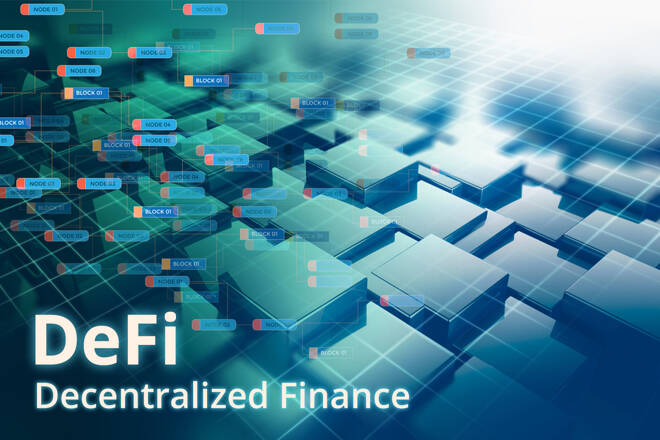Advertisement
Advertisement
S&P Global Sees no DeFi Threat to Traditional Finance
By:
S&P's Global Credit Outlook report for 2022 aligns with recent calls for a global regulatory framework for the crypto market.
Standard & Poor’s (S&P) is as a leading index provider and global credit rating agency. The S&P500 is one of the world’s most recognized indices, with S&P’s highly sought-after AAA rating accredited to companies such as Microsoft.
S&P and Increased Chatter from Regulators
As a highly respected independent research company, S&P releases an annual Global Credit Outlook report.
This year, the Global Credit Outlook 2022: Aftershocks, Future Shocks, And Transitions also focuses on Decentralized Finance. Earlier this month, the Bank of England’s Financial Stability Report had included a section dedicated to cryptocurrencies.
The release of S&P’s report coincides with increased government scrutiny over cryptocurrencies. This week, news hit the wires of the 117th Congress introducing 35 bills related to cryptos. This follows the chatter from the Bank of England last week over the need for a global framework.
In the U.S, the report comes at a tenuous time for digital assets and Ripple’s XRP in particular. A well-publicized SEC lawsuit against Ripple Lab has placed a spotlight on cryptos and alternatives to traditional banking platforms. Ripple’s remittance platform is considered a viable alternative to such platforms.
Standard & Poor’s and its Take on Crypto Assets
‘Crypto assets and tokenization will increasingly disrupt financial markets. Central bank digital currencies may act as a trusted bridge between traditional and virtual worlds.’
S&P believes that the adoption of cryptocurrencies will continue to gather pace. The report highlights that around 45 corporates have taken positions on cryptocurrencies (BTC and ETH), totaling around $24bn.
Three companies – Block.one, MicroStrategy, and Tesla – hold almost 84% of corporate investments in BTC. Growing institutional investor interest points to an accelerated expansion for cryptocurrencies as investment vehicles. Looking beyond corporate entities, senior elected officials in New York and Miami have expressed a desire to receive their salaries in cryptocurrencies. In spite of this, S&P does not see cryptocurrencies becoming a viable global means of payment until technology enhancements allow for greater efficiency. The report highlights consensus mechanisms as one area in need of technological enhancement.
On the regulatory front, S&P sees regulators and policymakers slowly catching up. S&P identifies several hurdles in the industry. These include the need for a regulatory framework that recognizes the rights of token holders and smart contract protocols. The key challenge, however, is seen to be the lack of a bridge of trust between the traditional and the virtual worlds.
Risks to the Global Financial Markets
Another concern, aligned with the Bank of England’s view on financial stability, is the possible negative impact crypto assets could have on the financial markets. The report offers a number of situations including:
- Volatility in liquidity flows between digital and traditional markets.
- Vulnerability in sometimes largely untested technologies – including cyber risk.
- Increasing opacity in financial transactions.
- A more fragmented monetary system that could reduce the ability of central banks to respond to emerging crises through monetary policy.
- Increased risks for retail and institutional investors given price volatility and the lack of regulatory oversight.
In consideration of the increased chatter from regulators and S&P’s report, progress towards a global regulatory framework may well gather pace in the year ahead.
About the Author
Bob Masonauthor
With over 28 years of experience in the financial industry, Bob has worked with various global rating agencies and multinational banks. Currently he is covering currencies, commodities, alternative asset classes and global equities, focusing mostly on European and Asian markets.
Did you find this article useful?
Latest news and analysis
Advertisement
